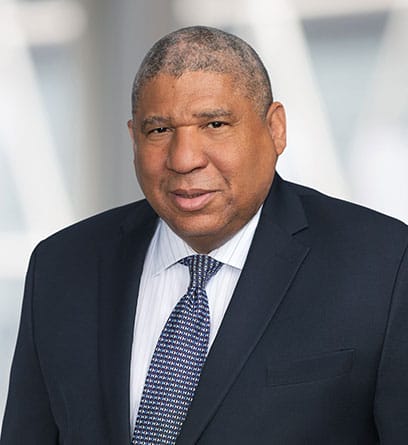Since at least 2015 and the decision by the 9th Circuit Court of Appeals, the question of student-athletes’ right to profit off his or her name, image and likeness (“NIL”) has been hotly debated, and part of the overarching discussion about student-athlete compensation. Student-athletes and advocacy groups working on their behalf have become more aggressive in confronting this issue.
Starting around 2018, the athletes and the advocacy groups drew the attention of the state and federal legislatures. These interested legislatures began demanding the NCAA address their concerns and started to take matters into their own hands. They were no longer accepting the NCAA’s rationalization on why they were not addressing and reforming student-athlete compensation issues. As a result, states initiated adoption of new state regulations.
This article will provide a preview of certain aspects of NIL bills, Florida’s in particular, that will require further interpretation and analysis once implemented.
State action
On June 12, 2020, Florida Governor Ron DeSantis signed into law SB 646 entitled “Intercollegiate Athlete Compensation and Rights” (the “Florida Bill”) which allows a college athlete to earn compensation for the use of his or her NIL.
The Florida Bill initially sets forth its broad objectives, including equality for all college athletes to earn compensation for use of his or her NIL, maintaining control as to how such NIL is used and protecting such athletes from “unauthorized appropriation” and “commercial exploitation.”
The Florida Bill applies to both public and private universities located in the State of Florida and goes into effect July 1, 2021. It will be the first NIL law implemented in the United States. Two additional states have also recently passed legislation that allows a college athlete to earn compensation for use of his or her NIL. On September 30, 2019, California Governor Gavin Newsom signed SB-206 entitled “Collegiate Athletics: Student Athlete Compensation and Representation.” California’s bill goes into effect January 1, 2023. On March 20, 2020, Colorado Governor Jared Polis signed SB-123 entitled “Compensation And Representation of Student Athletes.” Colorado’s bill also goes into effect January 1, 2023. Several other states have NIL bills pending or being drafted to address this issue.
Defining compensation and market value
The Florida Bill states that compensation earned by a college athlete “must be commensurate with the market value of the authorized use of” his or her NIL.
The California NIL bill does not define compensation nor include any wording to provide further context to the term, including the omission of the term “market value” or any similar term. Colorado’s NIL bill, however, does define compensation as “money or other remuneration or thing of value given to a student athlete in exchange for the use of the student athlete’s name, image or likeness.”
While it is natural to assume compensation means monetary compensation, the Florida Bill can be interpreted to be similar to Colorado’s bill and allow for a broader definition of compensation. Some could also argue that the Florida Bill would allow non-monetary compensation to be deemed compensation so long as it is commensurate with market value. So long as market value is being paid, use of a college athlete’s NIL could be compensated with products given to the college athlete, equity or ownership interests in the organization authorized to use his or her NIL or other non-monetary benefits.
Generally, market value is defined as the price currently offered for a certain type of asset in the marketplace. The term is most often referenced and defined as “fair market value.”
It is likely that the market value of using a college athlete’s NIL will be very dependent on the facts and circumstances of each case. In the context of television viewership, national exposure and overall popularity, a college football athlete at a well-known, highly visible school may argue that the authorized use of his NIL has more market value than a college wrestler at that same school. Furthermore, market value will be determined by the price that both parties in a contractual agreement believe is fair and accurate. This determination may be ripe for controversy, subject to Title IX arguments and fertile grounds for abuse.
Unaffiliated third party and supportive/beneficial entities
The Florida Bill states that compensation is only allowed to be provided “by a third party unaffiliated with” the college athlete’s public or private university that he or she attends in the state of Florida.
This provision seems very straightforward. Its purpose is to help prevent any type of conflict of interest between an already existing relationship between the university and a third party. For example, in 2019, the University of Northern Florida (“UNF”) signed a seven-year contract with Under Armour that makes the clothing company the official athletic apparel provider for UNF’s athletic programs. Thus, no college athlete at UNF would be able to enter into an agreement with Under Armour in which a UNF college athlete’s NIL would be used by Under Armour in exchange for compensation. Can a result of this restriction have consequences whereby a company realizes that it makes more economic sense to sponsor individual players as opposed to an entire college athletic program? Time may tell.
However, it may be argued that many third parties could be considered “affiliated” with a university. For example, if a company is a sponsor at the university’s annual Technology Fair, is the company considered an unaffiliated third party? Would that prevent the company from entering into an agreement to compensate a college athlete for the use or his or her NIL? Additionally, what if a married couple gives a donation to the school’s library through gifts designated in their estate planning documents? Can the company that either of them works at enter into an agreement to compensate the college athlete for use of his or her NIL? Those types of relationships will surely be examined,
Additionally, the Florida Bill also states that an entity “whose purpose includes supporting or benefitting the institution or its athletic programs or an officer, director or employee of such institution” cannot compensate a college athlete for the use of his or her NIL. Realistically, this provision in the Florida Bill is an indirect reference to preventing boosters and large donors of a university, a university’s athletic department or specific collegiate team from entering into agreements with college athletes to compensate the athlete for the use of his or her NIL.
Further interpretation will be needed to determine the breadth or narrowness regarding entities whose “purpose” is providing such support or benefit. Does this mean the entity’s sole purpose is to support or benefit an institution, such as an alumni association? The wording of the Florida Bill opens up an interpretation that any entity that supports or benefits the institution cannot enter into an agreement to compensate a college athlete for use of his or her NIL. It is possible that a company that purchases advertising space in a university’s college football stadium is considered a company whose purpose includes supporting or benefitting the athletic program. The determination about these type of relationships could change the college sponsorship landscape.
Additionally, because the Florida Bill includes an entity that supports only the institution itself, then if a non-exclusive purpose of an entity is to benefit the institution, many entities would be unable to enter into agreements with a college athlete for NIL purposes. Public universities have very large alumni bases and thousands of research contracts with various state and local entities. The inclusion of support and benefits to an institution may eventually be revisited, as those entities that a college athlete could engage for NIL compensation purposes may be severely limited.
How to differentiate supporting a university and benefitting a university is another area that will need further guidance. It is likely that supporting a university implies some sort of monetary donation while benefitting a university could mean a non-monetary donation of some kind such as donating professional services.
Professional assistance in receiving compensation
Under the Florida Bill a college athlete hoping to enter into an agreement to be compensated for the use of his or her NIL is able to receive representation from an attorney or an athlete agent. Only attorneys that are in good standing with the Florida Bar are able to assist a college athlete. It seems likely that other states looking at implementing similar legislation will also require “good standing” status in their jurisdiction.
Adherence to the team contract
A college athlete is prevented from entering into any agreement relating to compensation for his or her NIL if the contract would conflict with a term of his or her “team contract.” Of importance may the “entire agreement” provision included in a college athlete’s team contract. This provision may state that the college athlete’s team contract incorporates, the scholarship award documentation, the student athlete handbook, the university student handbook and other ancillary documents. These agreements incorporated into a student-team contract may further prevent a college athlete from contracting with certain entities or individuals to be compensated for use of his or her NIL. However, be mindful that reliance on the team contract argument may give rise to scrutiny regarding a potential employment relationship between the school and athlete. This unintended consequence may not benefit the institution or accomplish what the legislation intended.
Who is best situated to provide solutions?
Determining what organization is in the best position to provide solutions on this topic remains an unanswered question. Should determining the way for a college athlete to be compensated for the use of his or her NIL be a responsibility of each state legislature? If such a conclusion is reached it would not be surprising to see the NCAA revisit its 1993 strategy in Meyer v. NCAA when they invoked the Commerce Clause to argue that these independent state laws unduly impact commerce in other states. Ideally, guidance regarding any type of college athlete compensation should originate from the NCAA, and as a national governing body should be able to fashion a singular federal approach to this issue. However, because the NCAA has consistently reiterated its belief that college athletes are amateurs and unable to receive compensation, state legislatures are stepping in to address the problem of an unpaid labor market of college athletes, and appear less willing to accept the NCAA’s premise.
Conclusion
Nearly twelve additional states have proposed bills relating to the use of a college athlete’s NIL. Approximately six states have introduced a bill to its state legislature for review. The NCAA continues to plead with Congress to assist in creating legislation that will formalize, at the federal level, the use and compensation of a college athlete’s NIL. The use of a college athlete’s NIL is an area to continue monitoring in the near future as it will surely evolve over time.
Bob Wallace is the chair of Thompson Coburn’s Sports Law Group. Matthew Misichko is an associate in the Firm’s corporate & securities practice.


